Friday, June 29, 2018
Thursday, June 28, 2018
Wednesday, June 27, 2018
The benefits of getting involved in organized dentistry
 My first involvement with organized dentistry happened when a dentist from the Great Houston Dental Society (GHDS) invited me to Texas Mission of Mercy. I took on the opportunity, which opened the door for other community service outreach that provided free dental care for veterans and underserved populations. These experiences reminded me that we have the potential to generate a positive impact on others’ lives, even with the smallest amount of help we can provide. Together with our mutual passion and skills, we were able to improve the health of our community. Without this cooperation and guidance, none of this would have been possible.
My first involvement with organized dentistry happened when a dentist from the Great Houston Dental Society (GHDS) invited me to Texas Mission of Mercy. I took on the opportunity, which opened the door for other community service outreach that provided free dental care for veterans and underserved populations. These experiences reminded me that we have the potential to generate a positive impact on others’ lives, even with the smallest amount of help we can provide. Together with our mutual passion and skills, we were able to improve the health of our community. Without this cooperation and guidance, none of this would have been possible.
Later that year, I attended my second organized dentistry event: a GHDS Legislative Action Committee meeting. I was inspired by the passion that every attendee had for dentistry. This meeting focused on ways to bolster the profession and created a unified front to achieve change. It was my earliest experience with advocacy. I learned about the issues that face the profession and how to communicate with members of Congress during our approaching state lobby day. An issue that stood out to me at the time included a proposal to convert funding for the three dental schools in Texas into a formula to provide dental care to underserved and special needs patients in an effort to expand dental students’ knowledge and competency in caring for these populations and improve the public’s oral health.
These two experiences showed me how organized dentistry promotes the profession to help us better serve our patients. I knew I had to be part of it.
The importance of organized dentistry
I’ve now been involved at the local, district and national levels, and my understanding of organized dentistry has expanded. I’ve learned that consistent effort and teamwork by people with different skills, intelligent minds and diverse backgrounds help us maintain the profession’s autonomy. The profession is upheld by three pillars of organized dentistry: advocacy, education and service.
Advocacy
Complicated word, yet simple definition: to rally support for a cause we believe in. Whether it is on a state or national level, encourage members to attend a lobby day, take action alerts, be involved or just be informed. When we combine our voices to address critical issues facing the nation, we create a powerful impact. Our voices can bring solutions to the foreground in issues we face such as student loan debt, barriers to care, water fluoridation, licensure reform and so on. Last April, over 1,000 dental professionals came together to advocate for the Action for Dental Health Care Act during the ADA Dentist and Student Lobby Day. As of June 6, the bill moved forward in the legislative process and was introduced to the Senate. It was thrilling to know that I have contributed in this success and that my voice was heard. I would urge you to attend a national or state lobby day, meet your representatives and join the “tooth party” in advocating for dentistry.
Education
We have to remain informed and up-to-date to treat patients appropriately. Being part of a big collaboration, we are able to share resources, be involved in research and learn more about public oral health. For instance, ASDA and the ADA provide numerous opportunities for continuing education such as ASDA’s Career Compass to guide us to become better health care providers. Be sure to check it out to learn about how students transition into their professional lives as well-rounded dentists.
Service
Help comes in different shapes and forms. We all became part of dentistry to help patients regain confidence in their smiles and to have better oral and overall health. The three levels of organized dentistry have a mutual vision for better oral health care across the nation; therefore, we work with many other organizations and individuals to promote prevention and improve access to dental care, especially for underserved populations. I’ve been fortunate to have opportunities to serve my immediate community through programs such as Missions of Mercy. Host volunteering events within your chapters and communities during the Week of Service every January as part of ASDA’s National Outreach Initiative.
The future of our profession lies within our hands, voices and decisions. It is defined by what we choose to learn and our determination to be aware, engaged and supportive. I invite you to remember your first experiences in organized dentistry, why you dedicated yourself to the profession, and become involved to help us protect and shape our future for generations to come.
~Rana Shammas, Texas-Houston ’19, Council on Advocacy Legislative Coordinator
Tuesday, June 26, 2018
Monday, June 25, 2018
The subjectivity of dentistry

For dental students, science has never been subjective. We sit through semesters of organic chemistry and anatomy in college, spending long nights trying to understand the path to the right answer (because there’s always a right answer) to the complex problems our professors throw at us. We are well-tuned machines of memorization and comprehension.
Dental school is not much different, except the problems become more complex. Suddenly, everything you are learning has an impact on the patients you will someday treat. We learn the signs and symptoms, the pathology, the etiology that leads to the diagnosis. When it comes to a multiple-choice test, there is always a right answer. During my first year of dental school, I only time I heard a teacher express a smidgen of uncertainty was during the explanation of emissary veins in the skull. “They may or may not be there,” he shrugged. “Learn them anyway.”
As an English major, the lack of subjectivity was my hardest adjustment into dental school. It’s not merely a different subject base, but a completely different style of learning. Swapping Bronte for an anatomy textbook was no challenge, but there is an enormous difference between writing an essay and taking a multiple-choice exam.
When I used to write about Shakespeare, I would sit for hours with a play, mulling over its subtleties, considering what the author wanted us to feel, think and hope. I would read other authors’ criticisms and consider their own opinions in conjunction with my own before constructing the best argument I could make. The most challenging element of writing, especially about others’ writing, is acknowledging its complexity. In order to be a good writer, one must acknowledge that there is no right answer.
As I assist in the dental clinic and watch the D3s and D4s work, I’ve learned something: In the world of health care, there is also no right answer. Students will get an opinion from one dentist, which disagrees with that of another faculty member, yet the group leader will choose an entirely different treatment plan. There is no textbook answer for the complexities of patient care in the world of oral health and patient opinion. There is only the best educated, most informed guess. If that’s not the thesis statement to the essay of our lives, I don’t know what is.
It is difficult to be a humanities student in the lecture hall of dental school, but to my fellow writers, painters and musicians out there: Work hard and be patient. Our right-sided brains can rest assured because we are going to be acknowledging the subjective complexities of patient care for the rest of our lives. And our multiple-choice loving friends are going to have to be content to learn that sometimes, there is no right answer.
~Juliette Mann, Pennsylvania ’21
Friday, June 22, 2018
Thursday, June 21, 2018
Wednesday, June 20, 2018
Celebrating diversity: On coming out

If you search the word “normal,” the definition you’ll see resembles this: “conforming to a standard, usual, typical or expected.” In a world where labels and definitions are engraved in our minds, I am redefining normal.
This is me: A six-foot-tall ginger with ghostly white skin who constantly acts like a goofball. I was born and raised in the small city of Valdosta, Georgia, by happily married parents who worked multiple jobs. I have an older brother and a family dog named Gidget. I spent part of my childhood taking Taekwondo classes, working up to earning my black belt. I was a scholar student throughout school and remained balanced. To the world, I was normal.
However, a mass of questions and secrets lurked in my mind every day. I was gay and didn’t know how to come to terms with it. Every day, I chose to be a fraud. I spoke differently, changed my personality and dressed like someone I wasn’t. There were times when I wanted to scream but didn’t have the voice. I had to tell someone but didn’t know how. Questions flooded my mind: Who would I tell first? What would I say? When should I do this? Would I be making a mistake?
A new adventure was soon upon me: dental school. I want to spend every day helping people with their smiles, but I couldn’t help but wonder if a gay guy could be a dentist. I thought about if I would be respected in the field, if I was capable enough. I had the right grades, took the required tests and, on the outside, I was ready to conquer my dreams.
In December 2016, I was accepted into dental school. This was the confidence boost that allowed me to push “restart” on life. I no longer questioned my capability. I was going to be a dentist. Now, I just needed to decide if I would be a gay dentist.
Before coming out, I sought guidance from YouTube. Watching countless coming out stories, I soaked up the confidence I witnessed. I appreciated seeing people doing the one thing I couldn’t: being honest with themselves. I decided to take the plunge. I feared the worst but knew that if all else failed, I would be authentic.
On April 20, 2017, I came out to my parents. I trembled with fear. My heart pounded. Twenty-one years of lying to myself and those around me came down to one night in my living room, face-to-face with the two people I looked up to most. I felt like I was running the marathon of my life and the course was about to change. My parents were confused, and as I began talking, tears welled into my eyes. Then, I said it: “Mom, Dad, I wanted to tell you I’m gay.” Their instant reaction was love. At that moment, all my uncertainties fell away. They hugged me and said they would love and support me through all my decisions.
The following days and weeks were filled with love and support from my closest friends and family, but the coming out process was not flawless. I lost friends who did not agree with the “new me.” I recovered from this and knew there was no looking back. I reestablished myself, began dental school as a new person. I didn’t worry about slipping up in a conversation or getting caught checking a guy out. I didn’t have the burden of presenting a fake persona. Someone asked me if being out in dental school has been different. It’s been a game changer. I’m no longer under a disguise, and it’s liberating.
Freestyle skier Gus Kenworthy and figure skater Adam Rippon recently broke through as openly gay athletes and are an inspiration to me. They are truly redefining the word “normal.” They have motivated me to find my voice, and as an openly gay man, I am responsible for being an inspiration to people who have been in my shoes. I express the necessity of living your truth to a broader audience on Instagram because it allows me to share my daily life, illustrate my dental school journey and show people there is no real definition of “normal.”
I want to give hope to people who think that they aren’t qualified and who get sidelined due to stigmas. If you have a dream, you are qualified. If you know how to dream, you already have what it takes to overcome any obstacle ahead. Strive to be the best you can be every single day, no matter your sexual orientation, gender, age or any other label that people want to place on you. If you do this, you will conquer your dream.
~Zack Youngblood, Florida ’21
Tuesday, June 19, 2018
It’s not all about teeth: A communications webinar

Of all the responsibilities in the dental office, one of the most important is building patient relationships. The entire success of the practice depends upon the result of our ability to understand your patients as individuals, recognize and respond to their needs/wants and your ability to guide them to an informed decision that is in their own best interest. The dental school tends to focus on the technical aspects every dentist should have; however, strategies on how to effectively communicate with patients isn’t always a focus in the curriculum.
Join Bill Bloink, DMD, and Leadership Training Developer Zara Thomas of Heartland Dental as they explore some of the essential fundamental aspects of how to build patient relationships in “It’s Not All About Teeth: A Communications Webinar.” This interactive webinar will be full of storytelling, taking a look at how your personality can influence your relationships with patients, case scenarios and tools to becoming an excellent well-rounded dentist post-dental school.
~Heartland Dental
Register for the noon or 7:30 p.m. CST webinar today.
This content is sponsored and does not necessarily reflect the views of ASDA.
Monday, June 18, 2018
Celebrating diversity: A spotlight on Eid al-Fitr

Eid al-Fitr (“Breaking of the Fast”) is a Muslim three-day holiday, signifying the end of fasting during the month of Ramadan. Ramadan is the ninth month of the Islamic calendar during which the Qur’an was revealed. In this month, it is obligatory for all able Muslims to partake in a month-long fast where they are to abstain from food and drink (yes, even water!) during daylight hours. Fasting during the month of Ramadan is one of the Five Pillars of Islam, along with a declaration of faith, five daily prayers, giving to charity and a pilgrimage to Mecca. The holy month is also used as an opportunity to build one’s spirituality. At night, Muslims line up to offer a number of optional prayers called “Taraweeh” while listening to and reflecting on the recitation of the Qur’an.
It is worth noting that there are two Eids in the Muslim calendar: Eid al-Fitr following the month of Ramadan and Eid al-Adha (“Feast of Sacrifice”), a holier celebration commemorating the prophet Ibrahim’s willingness to sacrifice his son in an act of obedience to God. Eid al-Adha is during the 12th month of the Islamic lunar calendar.
Eid al-Fitr is marked by the first sighting of the new moon, and since it is based on a lunar calendar, the date of this festival changes every year drifting earlier each year. It is a time for Muslims and their families to come together and commemorate the completion of the month-long fast with a seemingly overabundance of food.
On the morning of the first day of Eid, prayers are held in mosques and large event halls. These prayers are followed by a sermon. Typically, you will find Muslims are in their best clothes, be it traditional clothing from their respective cultures or western clothes. It is a time to spend time with friends and family and exchange gifts (this is especially anticipated among the children). It is tradition to visit elder family members, as well as the graves of our ancestors during Eid al-Fitr.
Nonetheless, the gathering of Muslims for the prayer of Eid al-Fitr can be seen as a graduation from the challenging month. As you can probably imagine, aside of the daily responsibilities, the month-long fast, in addition to offering Taraweeh prayers, it can become exhausting by the 28th night.
During this holiday, you may hear the words “Eid Mubarak” often. The word “Eid” means celebration and “Mubarak” means blessed. This is synonymous with saying “have a blessed holiday.” Therefore, let us greet our Muslim friends with a warm “Eid Mubarak” during this well-deserved celebration.
~Maher Lawand, Texas A&M ’22
Friday, June 15, 2018
Thursday, June 14, 2018
Wednesday, June 13, 2018
Opioid use: Reframing how we think about pain management

Imagine it is 2 a.m., and you are cramming for your pharmacology exam. You flip through the hundreds of flashcards you created to memorize the properties of the medications and corresponding treatment protocol. You come across analgesics, specifically opioids, and remember they are used to alleviate pain.
In school, we learn about the properties and proper dosages of the drugs we will one day prescribe, as well as how to address potential concerns of usage with our patients, but in order to enhance our own patient care mentality, we should reframe how we think about pain management overall.
How society views pain
There’s no denying that dentistry and pain are intertwined. Our patients come to us when they want their pain relieved and, on many occasions, still leave with some level of discomfort. In dental school, we learn about A-delta fibers and C-fibers. We learn that pain can be acute or chronic. We learn to ask the following questions: When did the pain begin? How long does it last? Does it feel dull or sharp? Then we use this information to develop differential diagnoses and a proposed treatment. But we tend to forget that pain is a complex phenomenon. It’s evolutionary, and it acts as a sign indicating that something is wrong.
As dentists, our success doesn’t lie in the complete eradication of a patient’s pain but in our ability to listen to their stories so that we can help them manage it safely and effectively. What we may not always remember is that person to whom we’re prescribing the opioid after a standard tooth extraction may be dealing with issues outside of the dental office, such as anxiety, fear or some other form of acute and chronic pain. Knowing this information affects our decision on what medication we prescribe to them.
Now, opioids effectively relieve short-term pain; however, they are not meant to resolve it long term and shouldn’t always be the first choice for pain management, especially when you consider the potential for addiction and easy accessibility. So how do we determine the best prescribing protocol?
What’s being done?
Dental schools across the country are responding to this. Our education is rooted in evidence-based dentistry, and studies have shown that the combination of ibuprofen and acetaminophen is just as potent as an opioid in the management of post-extraction pain.
In Massachusetts late last year, the Baker-Polito Administration, along with the deans of the state’s three dental schools and the Massachusetts Dental Society, announced dental education core competencies for the prevention and management of prescription drug misuse.
In April 2018, the ADA and ASDA lobbied at congressional appointments for mandatory continuing education, imposing prescribing limits to seven days, supporting monitoring programs and improving the quality of these programs. ASDA’s own B-13 policy urges dental schools to provide resources for dental students to appropriately address opioids with their patients.
What’s left to do?
The resources that we receive as students not only need to include proper prescribing practices but how to discuss the concerns surrounding opioid misuse with our patients. Our acknowledgement that pain can be physical and emotional is the first step in advancing our education. We should also understand how social determinants of health, such as social and physical environment, economic stability, health care and education, impact the opioid epidemic.
The next step is advocating for opportunities to practice discussing these topics prior to entering clinic. This includes learning to recognize signs of potential drug-seekers, resources near our schools for those with misuse disorders and discussing pain management alternatives with patients.
The last is to advocate for education core competencies and continuing education based on the most up-to-date prescribing protocols. Our education — from the classroom to the clinic — should incorporate the idea that pain is a multi-faceted issue and we can no longer think about it in just one way. Doing this will help us reframe what we think about pain management and improve the way we tackle this crisis.
~Roopali Kulkarni, Pennsylvania ’19, ASDA President
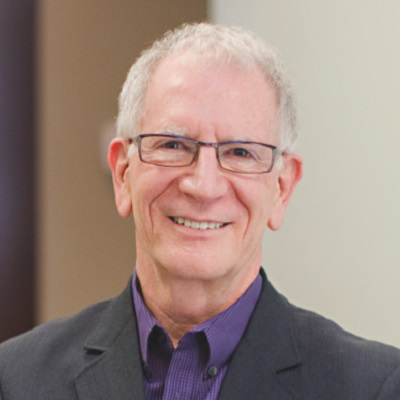 Periodontist Dr. Alvin Danenberg writes that he is fortunate to have patients who are willing to ask him detailed questions about both their oral and overall health. Recently, he had a patient ask about intermittent fasting as this patient wanted to lose a little weight. Dr. Danenberg recounts this example of how a dental practice can offer more than just care of the oral cavity.
Periodontist Dr. Alvin Danenberg writes that he is fortunate to have patients who are willing to ask him detailed questions about both their oral and overall health. Recently, he had a patient ask about intermittent fasting as this patient wanted to lose a little weight. Dr. Danenberg recounts this example of how a dental practice can offer more than just care of the oral cavity.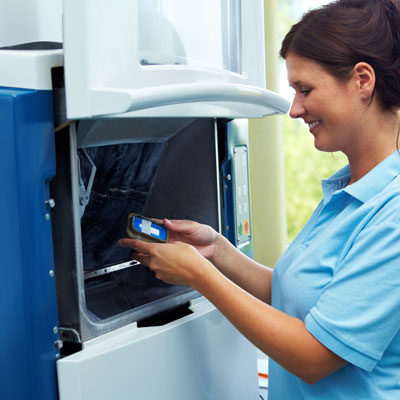 Manufacturers have claimed that CAD/CAM dentures possess superior mechanical properties compared with conventional heat-cured dentures. In a new study, researchers compared two CAD/CAM denture specimens with a heat-cured specimen to see if the claims held up.
Manufacturers have claimed that CAD/CAM dentures possess superior mechanical properties compared with conventional heat-cured dentures. In a new study, researchers compared two CAD/CAM denture specimens with a heat-cured specimen to see if the claims held up.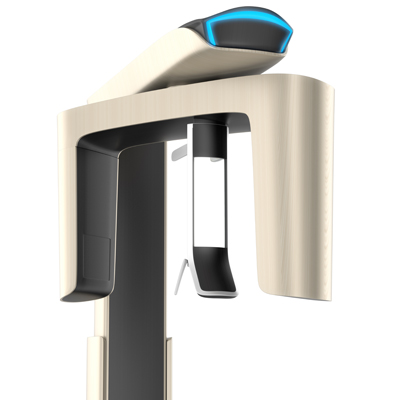 Detecting vertical root fractures in endodontically treated teeth is difficult, no matter the filling material used. A new study investigated whether a tooth's orientation in relation to the x-ray projection plane alters a practitioner's ability to detect these fractures with cone-beam CT (CBCT).
Detecting vertical root fractures in endodontically treated teeth is difficult, no matter the filling material used. A new study investigated whether a tooth's orientation in relation to the x-ray projection plane alters a practitioner's ability to detect these fractures with cone-beam CT (CBCT).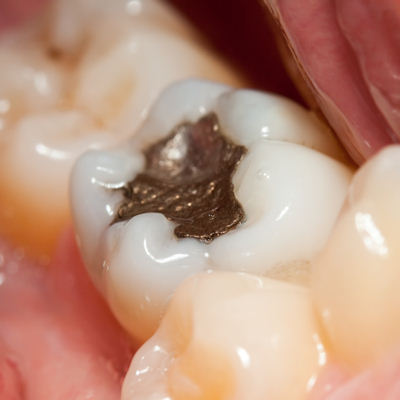 Magnetic resonance imaging (MRI) at 7-tesla magnet strength may release toxic mercury from amalgam fillings, according to a new study published online June 26 in the journal Radiology. However, the effect was not found with the lower-strength 1.5-tesla magnets that are more commonly used in the clinical setting, the researchers noted.
Magnetic resonance imaging (MRI) at 7-tesla magnet strength may release toxic mercury from amalgam fillings, according to a new study published online June 26 in the journal Radiology. However, the effect was not found with the lower-strength 1.5-tesla magnets that are more commonly used in the clinical setting, the researchers noted.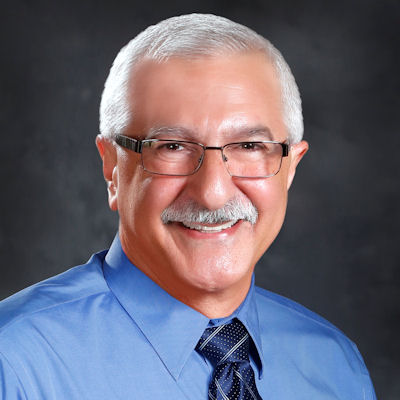 In this Second Opinion, Dr. Johnny Johnson Jr., president of the American Fluoridation, looks at the response to studies about fluoride's safety. Dr. Johnson addresses the need for those in the public health community to respond when fluoride's use is challenged.
In this Second Opinion, Dr. Johnny Johnson Jr., president of the American Fluoridation, looks at the response to studies about fluoride's safety. Dr. Johnson addresses the need for those in the public health community to respond when fluoride's use is challenged.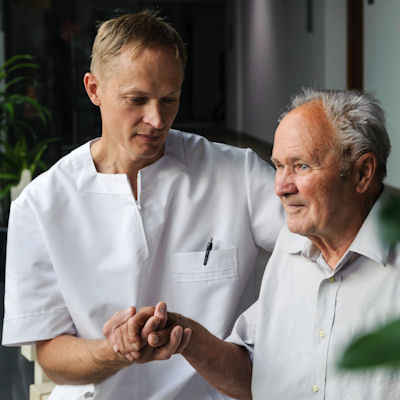 Seeking ways to improve oral healthcare in nursing home residents, researchers studied an innovative mobile dentistry program that provided preventive and curative oral healthcare treatment. They found the program reduced caries and helped residents maintain their natural teeth.
Seeking ways to improve oral healthcare in nursing home residents, researchers studied an innovative mobile dentistry program that provided preventive and curative oral healthcare treatment. They found the program reduced caries and helped residents maintain their natural teeth.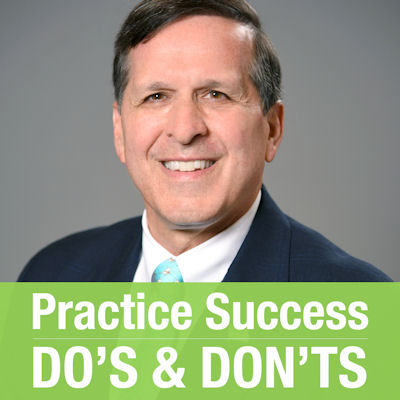 Too many dentists and team members run themselves ragged by not eating properly, exercising regularly, getting enough sleep, or taking time out for themselves. Both doctors and staff should develop healthy routines that include regular exercise, sleep, healthy food, and bonding with family, friends, and even co-workers, advises Dr. Roger P. Levin. All of these things are important to your physical and mental well-being.
Too many dentists and team members run themselves ragged by not eating properly, exercising regularly, getting enough sleep, or taking time out for themselves. Both doctors and staff should develop healthy routines that include regular exercise, sleep, healthy food, and bonding with family, friends, and even co-workers, advises Dr. Roger P. Levin. All of these things are important to your physical and mental well-being.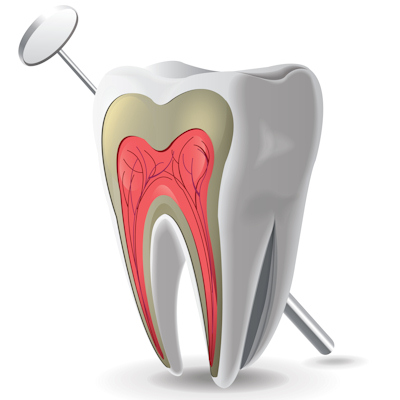 Not all endodontic files are equal when it comes to reducing pain after root canal treatment. A new study found that patients reported less pain after being treated by one self-adjusting file.
Not all endodontic files are equal when it comes to reducing pain after root canal treatment. A new study found that patients reported less pain after being treated by one self-adjusting file.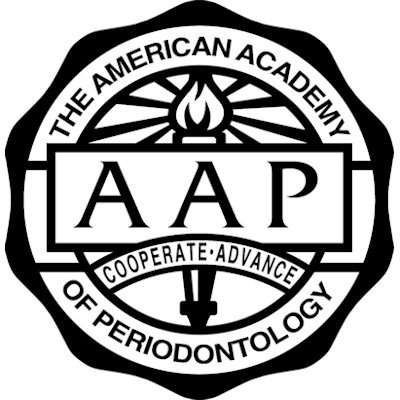 A new staging and grading system for periodontitis and classifying peri-implant diseases and conditions is one of the highlights of a publication on June 21 from an international workshop on periodontal disease by the American Academy of Periodontology (AAP).
A new staging and grading system for periodontitis and classifying peri-implant diseases and conditions is one of the highlights of a publication on June 21 from an international workshop on periodontal disease by the American Academy of Periodontology (AAP).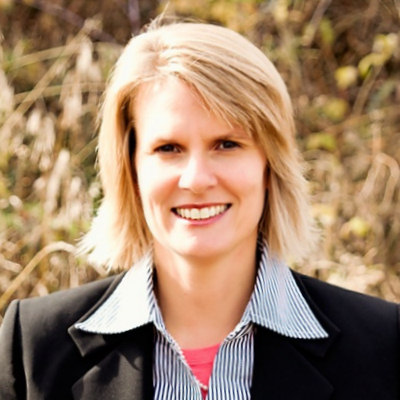 Being and remaining on the same page are constant demands of any dental office, writes Dr. Lisa Knowles. As technologies change and philosophies evolve, there is a constant need to update communication between the professionals and the patients. Dr. Knowles offers five practical ideas to ensure everyone in your practice is on the same page.
Being and remaining on the same page are constant demands of any dental office, writes Dr. Lisa Knowles. As technologies change and philosophies evolve, there is a constant need to update communication between the professionals and the patients. Dr. Knowles offers five practical ideas to ensure everyone in your practice is on the same page. Recent research is scant on the dental health effects of water fluoridation in the U.S., despite the public health importance of this intervention. Therefore, the researchers of a new study investigated the association between community water fluoridation and dental caries occurrence in U.S. children.
Recent research is scant on the dental health effects of water fluoridation in the U.S., despite the public health importance of this intervention. Therefore, the researchers of a new study investigated the association between community water fluoridation and dental caries occurrence in U.S. children.
 Family structure may partly influence whether children experience dental fear and anxiety, according to the results of a new study. Researchers found that children with siblings feared the dentist more than only children and children from single-parent households.
Family structure may partly influence whether children experience dental fear and anxiety, according to the results of a new study. Researchers found that children with siblings feared the dentist more than only children and children from single-parent households.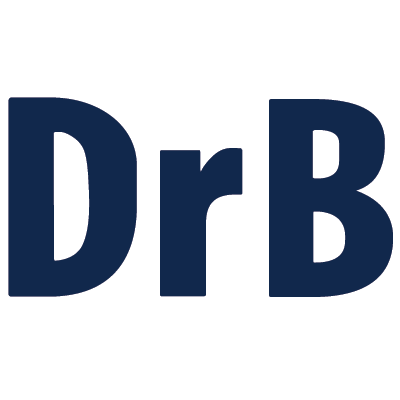 Two new continuing education (CE) courses are now available from DrBicuspid.com. One course focuses on dental handpiece sterilization and the second on insurance independence and reimbursement.
Two new continuing education (CE) courses are now available from DrBicuspid.com. One course focuses on dental handpiece sterilization and the second on insurance independence and reimbursement. Fast cars, unprotected sex, and opioid addiction? The brains of adolescents are wired to take risks, and dentists are often the first professionals to prescribe opioids to this population. Learn how one expert recommended treating teenagers and young adults during a recent ADA webinar.
Fast cars, unprotected sex, and opioid addiction? The brains of adolescents are wired to take risks, and dentists are often the first professionals to prescribe opioids to this population. Learn how one expert recommended treating teenagers and young adults during a recent ADA webinar.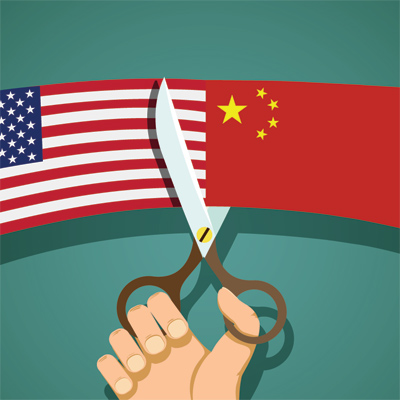 The dental industry received mixed news in the trade showdown between the U.S. and China, as many dental products were taken off the list of products and materials that will have tariffs slapped on them. However, imaging, optical, and anesthetic devices were not spared and remain on the list to have a 25% tariff imposed beginning in July.
The dental industry received mixed news in the trade showdown between the U.S. and China, as many dental products were taken off the list of products and materials that will have tariffs slapped on them. However, imaging, optical, and anesthetic devices were not spared and remain on the list to have a 25% tariff imposed beginning in July.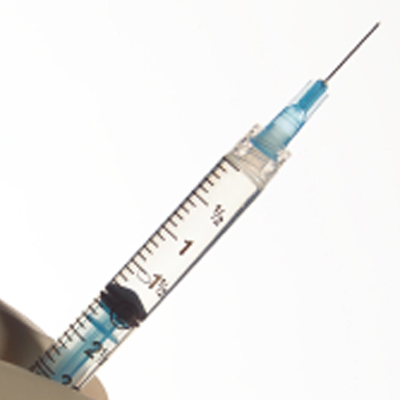 What's the maximum recommended dose for lidocaine or mepivacaine? The answers remain unclear as guidelines published by dental organizations, manufacturers, and textbooks vary, so researchers surveyed faculty at U.S. dental schools to learn more about the standards they teach.
What's the maximum recommended dose for lidocaine or mepivacaine? The answers remain unclear as guidelines published by dental organizations, manufacturers, and textbooks vary, so researchers surveyed faculty at U.S. dental schools to learn more about the standards they teach. The number of U.S. middle and high school students who use tobacco products has significantly dropped since 2011, according to new data from the U.S. government. However, more than 3 million students still regularly use electronic cigarettes and other tobacco products.
The number of U.S. middle and high school students who use tobacco products has significantly dropped since 2011, according to new data from the U.S. government. However, more than 3 million students still regularly use electronic cigarettes and other tobacco products.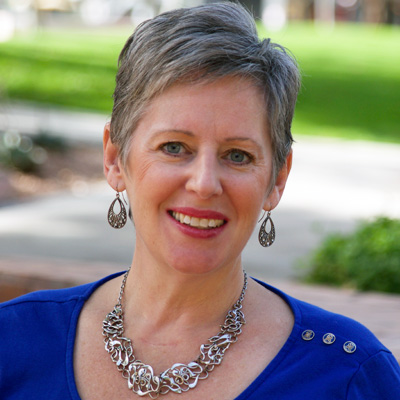 Is there a way to help your office improve patient and communication, get your team members all on the same clinical page, and improve your bottom line? Practice management consultant Jen Butler suggests to many of her clients that they use a perio flow chart to help. In her latest column, she outlines the benefits these charts can bring to your practice.
Is there a way to help your office improve patient and communication, get your team members all on the same clinical page, and improve your bottom line? Practice management consultant Jen Butler suggests to many of her clients that they use a perio flow chart to help. In her latest column, she outlines the benefits these charts can bring to your practice.